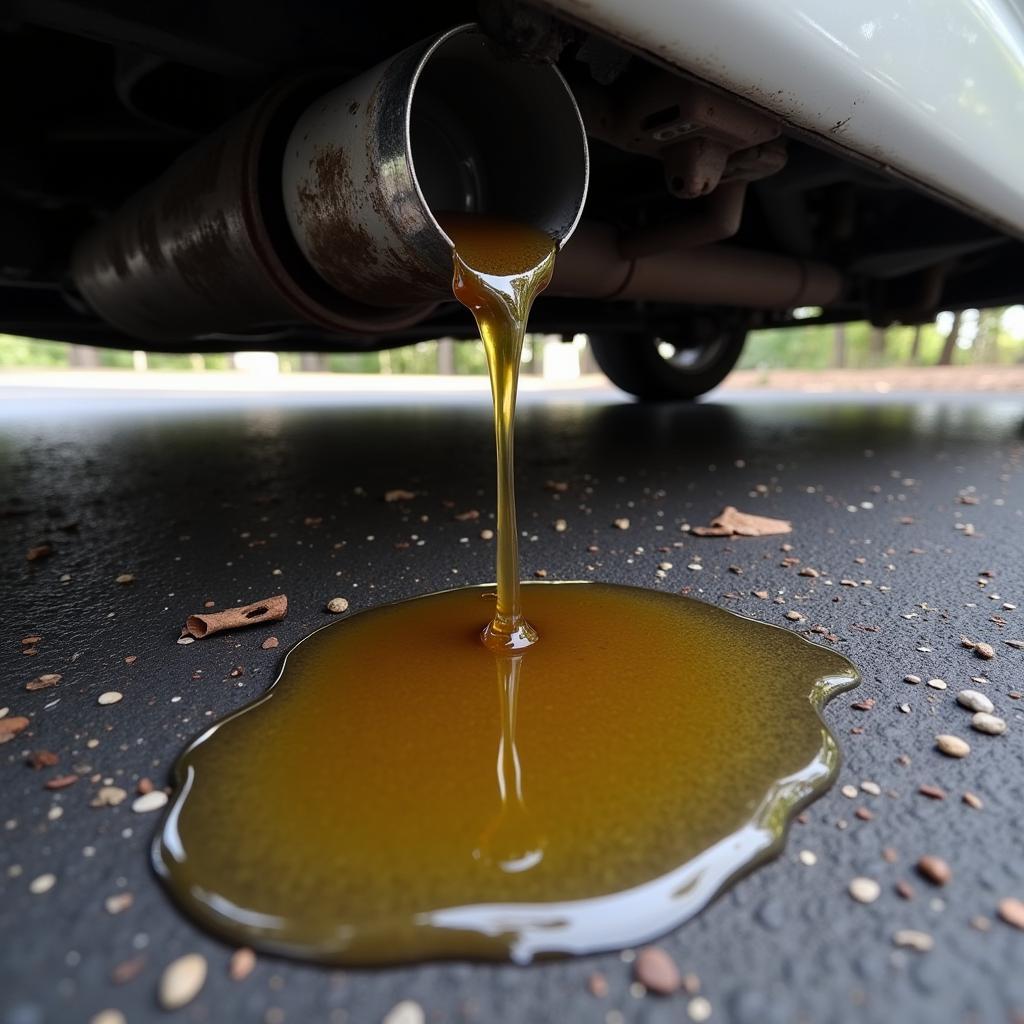Low oil pressure problems can be a real headache for car owners. Understanding the causes, symptoms, and solutions can save you time, money, and potential engine damage. This guide will delve into everything you need to know about Car Low Oil Pressure Problems, from diagnosis to prevention.
Understanding Car Low Oil Pressure
Low oil pressure signifies that the engine isn’t receiving adequate lubrication. This can lead to increased friction, overheating, and ultimately, catastrophic engine failure. Ignoring this issue is like running a marathon with no water – it’s simply not sustainable. But before panicking, it’s important to understand why your car might be experiencing low oil pressure.
Common Causes of Low Oil Pressure
Several factors can contribute to low oil pressure. Some of the most common culprits include:
- Low Oil Level: This is often the easiest fix. Make sure to check your oil level regularly and top it off as needed. If you are experiencing a 2010 lincoln town car problems, low oil level could be a contributing factor.
- Worn Oil Pump: The oil pump is the heart of your car’s lubrication system. A worn-out pump can struggle to circulate oil effectively, resulting in low pressure.
- Clogged Oil Filter: A dirty oil filter restricts oil flow. Regular oil changes with filter replacements are crucial for maintaining proper oil pressure.
- Leaking Oil: Check for oil leaks around the engine and underneath your car. Leaks can gradually deplete your oil supply, leading to low pressure.
- Worn Engine Bearings: These bearings rely on oil for lubrication. When they wear out, oil can leak past them, reducing pressure.
- Incorrect Oil Viscosity: Using the wrong type of oil can affect its flow characteristics, potentially causing low pressure. Refer to your owner’s manual for the recommended oil viscosity.
 Oil leak visible under a car, indicating potential low oil pressure
Oil leak visible under a car, indicating potential low oil pressure
Diagnosing Low Oil Pressure Problems
Diagnosing low oil pressure often involves a combination of visual inspections and mechanical tests. If you suspect a problem, here’s what you should do:
- Check the Oil Pressure Gauge: The most obvious sign is a low reading on your oil pressure gauge.
- Look for the Warning Light: Your car’s oil pressure warning light is another clear indicator.
- Inspect for Leaks: As mentioned earlier, check for oil leaks under the car and around the engine.
- Check the Oil Level: Use the dipstick to ensure the oil level is within the recommended range.
If you’re unsure, seeking professional help is always a good idea. A qualified mechanic can accurately diagnose the problem and recommend the appropriate repairs. Sometimes, seemingly unrelated issues like those found in acura car engine explosion problems can exacerbate existing oil pressure problems.
Solutions for Low Oil Pressure
The solution for low oil pressure depends on the underlying cause. Here are some common fixes:
- Add Oil: If the oil level is low, simply adding more oil might solve the problem. However, if the oil level drops again quickly, it indicates a leak or other issue.
- Change the Oil and Filter: Regular maintenance can prevent many oil pressure problems. Make sure to use the correct oil viscosity recommended in your owner’s manual.
- Replace the Oil Pump: A failing oil pump needs to be replaced. This is a more involved repair and may require professional assistance.
- Repair Oil Leaks: Identifying and fixing oil leaks is crucial for maintaining proper oil pressure.
- Replace Worn Engine Bearings: If worn bearings are the culprit, they’ll need to be replaced. This is a significant repair and best handled by a professional mechanic.
 Mechanic checking car engine oil
Mechanic checking car engine oil
Preventing Low Oil Pressure
Preventing low oil pressure is often easier and cheaper than fixing it. Regular maintenance, including oil changes and filter replacements, is essential. Checking your oil level regularly can also help you catch potential problems early. If you’re looking for problem free cars, be sure to prioritize regular maintenance even if they have a reputation for reliability. Diagnosing issues, even when there’s no warning light, as discussed in how to diagnose car problem without light, can also contribute to preventative maintenance. Similarly, understanding how to handle situations when your car has problem starting and check engine light is on can help prevent further damage and potentially even low oil pressure issues.
Conclusion
Car low oil pressure problems can be serious, but with proper understanding and maintenance, they can be prevented or addressed effectively. Remember, regular oil changes, checking for leaks, and using the correct oil are crucial for a healthy engine. If you’re ever unsure about any aspect of your car’s health, don’t hesitate to contact us at AutoTipPro at +1 (641) 206-8880 or visit our office at 500 N St Mary’s St, San Antonio, TX 78205, United States. We’re here to help you keep your car running smoothly.
FAQ
- What does low oil pressure mean? Low oil pressure indicates inadequate lubrication in the engine.
- How do I check my car’s oil pressure? Use the oil pressure gauge on your dashboard.
- What are the signs of low oil pressure? Low gauge reading, warning light, engine noise, and overheating.
- Can I drive with low oil pressure? No, it can cause severe engine damage.
- How do I fix low oil pressure? The solution depends on the cause, ranging from adding oil to replacing the oil pump.
- How can I prevent low oil pressure? Regular oil changes, checking for leaks, and using the correct oil.
- What should I do if my oil pressure light comes on? Stop driving immediately and check the oil level. If the problem persists, consult a mechanic.






Leave a Reply